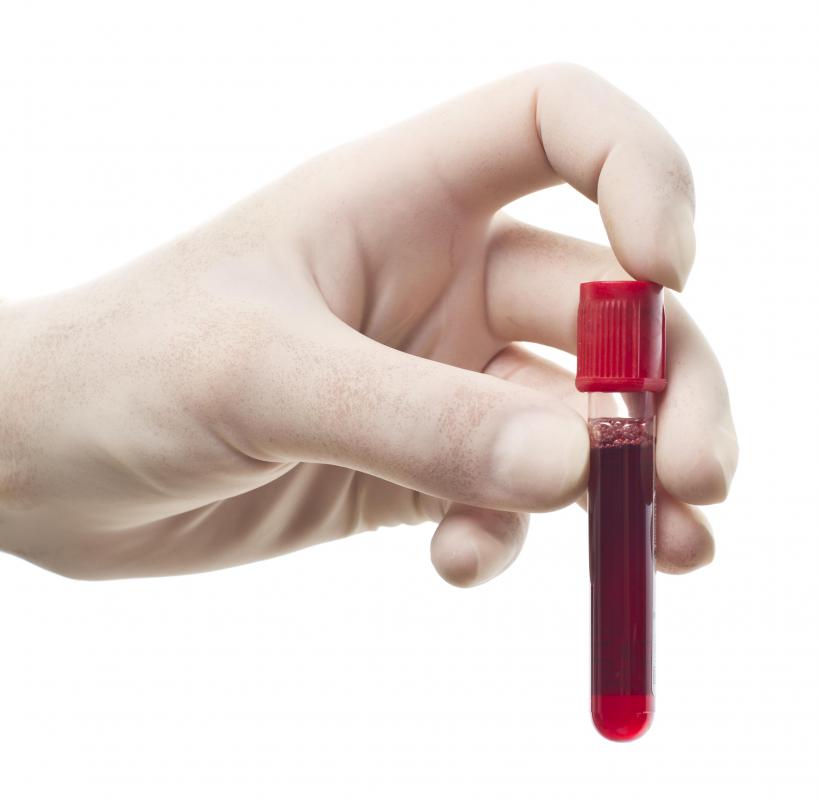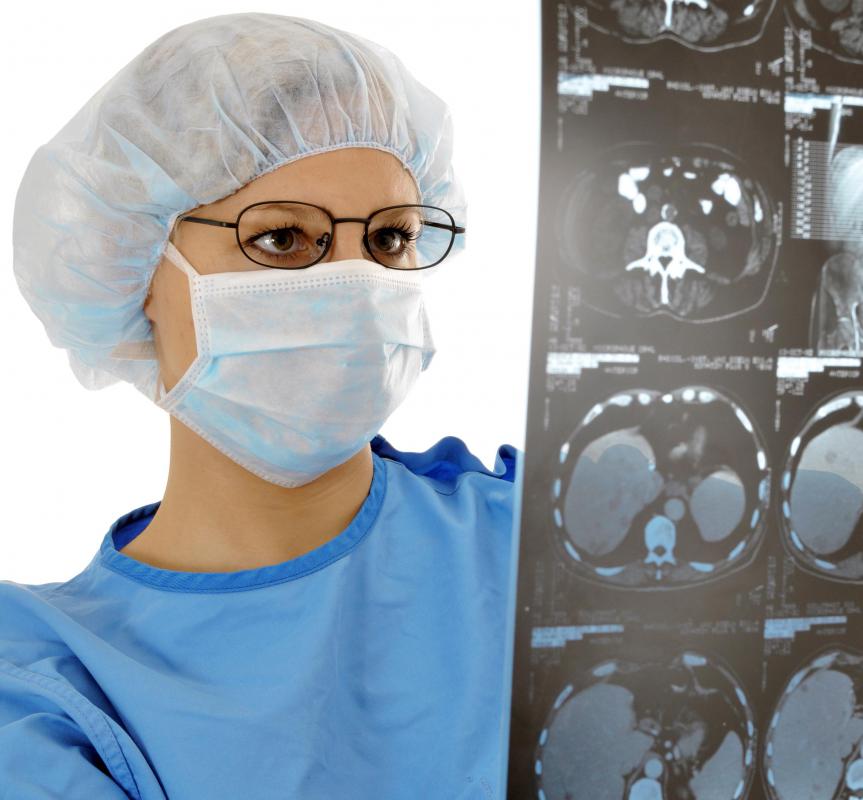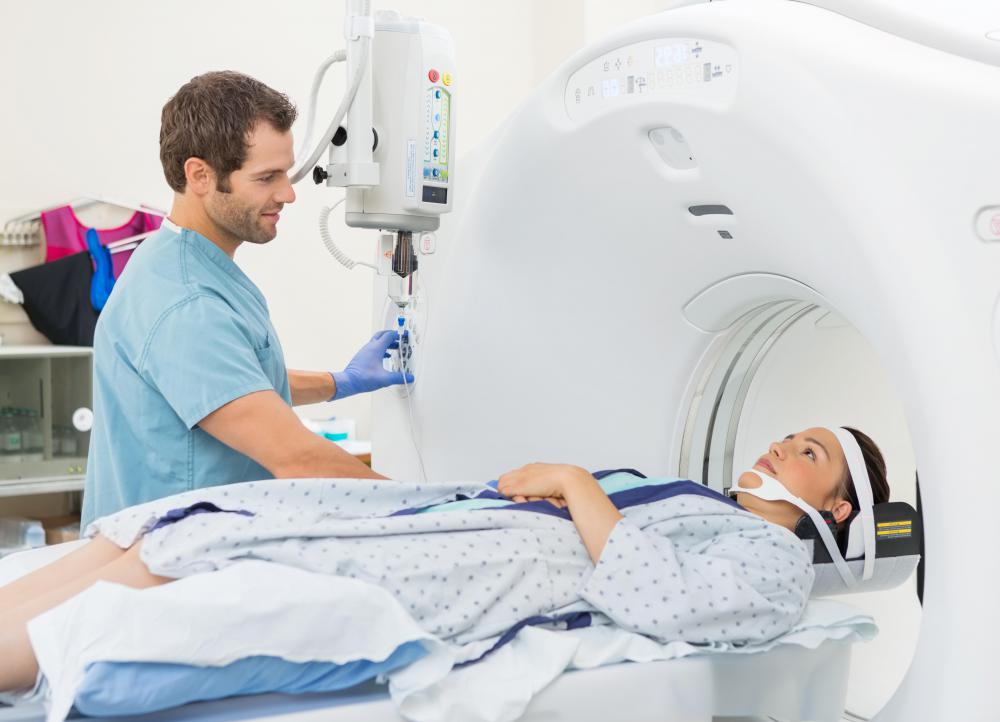At TheHealthBoard, we're committed to delivering accurate, trustworthy information. Our expert-authored content is rigorously fact-checked and sourced from credible authorities. Discover how we uphold the highest standards in providing you with reliable knowledge.
What are the Different Types of Diagnostic Test?
A diagnostic test may be performed to detect and diagnose health problems. These tests can be useful in finding diseases and tracking their progression. There are many kinds of diagnostic tests. CT scans, PET scans, MRIs, ultrasound and blood tests are some of the different types.
A computed tomography (CT) scan is a diagnostic imaging tool. They create cross-sectional pictures of the body using computer and X-ray technology. Physicians usually can evaluate all major body parts for abnormalities with this test. It can be used to diagnose cancer, find signs of heart disease, locate blood clots and internal bleeding, and to identify many other health issues.

Specialized X-rays typically are taken to produce CT scan pictures. This test can scan the body from many different angles. Contrast dye may be used to provide better imaging. This test can clearly show organs, bones, and inner structures such as glands, blood vessels, and lymph nodes.
Another type of diagnostic test is a positron emission tomography (PET) scan. A PET scan is a medical imaging test. It may be used to show how well organs are functioning inside the body. The scan may be used to detect differences in chemical and metabolic activity. Vital bodily functions such as oxygen use, blood flow, and glucose metabolism may be measured with this type of scan.

PET scans can help doctors make more accurate diagnoses. Commonly detected health problems include brain disorders, central nervous system problems, heart problems, as well as cancer. This scan could be used to help plan a treatment course. Additionally, it may used to conclude the effectiveness of current treatment plans.
Magnetic resonance imaging (MRI) also may be used in diagnostics. Computer images of internal structures such as bones, organs, muscles, and nerves can be produced using electromagnetic radio waves. This test usually can be performed on any part of the body. Detailed images of organs as well as soft tissues can be produced by this imaging technique.

High frequency sound waves are used to view internal organs and images on an ultrasound during an MRI. Some organs commonly viewed by this type of diagnostic test include the liver, kidneys, heart, and other key organs. It also may be used during pregnancy to examine a fetus. An ultrasound also may be referred to as a sonogram.
If a person has been experiencing heart problems, their doctor may recommend that they have an electrocardiogram (EKG or ECG). An EKG is commonly used to diagnose underlying heart issues. This test measures electrical activity of the heart. An echocardiogram may also be used to examine heart abnormalities. A graphic outline of heart movement is produced by this test, including pictures of the heart chambers and valves.

Blood tests may also be used as a diagnostic tool. A sample of blood is drawn for laboratory analysis for this test. Diseases, organ function, and medication effectiveness usually can be analyzed. Blood tests generally are used to determine a variety of health issues.
A patient's doctor generally will decide the best type of test for them. Tests usually are performed on an individual basis. Some people may have to undergo more than one test to be properly diagnosed.
AS FEATURED ON:
AS FEATURED ON:




















Discussion Comments
Subway11 - That is so true with the advances in medicine many people are enjoying a better quality of life.
I know that cholesterol screenings are really important too because they can be a precursor to heart disease.
The amount of fat in the blood stream determines the likelihood of developing blockage in the arteries that can lead to a heart attack.
Since there are no physical symptoms until you are actually having a heart attack it is best to have your cholesterol checked every year after age 30.
This way a doctor can monitor your cholesterol reading and prescribe medication if it is necessary. Some people can only get their cholesterol down with medication.
I have a friend who lives a healthy lifestyle. She exercises every day and eats salads and still has above average cholesterol readings.
Her doctor told her that her system produces cholesterol which is why her numbers will always be elevated. This problem tends to run in families and medication is the only way to treat it at the moment.
BrickBack - I hate mammograms but they are a necessary evil. I know that at age 50 a colonoscopy is recommended to detect colon cancer.
That is one test that I am not looking forward to but as uncomfortable as some of these tests are it is important that you take the time to go for the screenings.
My mother died of cancer because she failed to have herself checked out. Many diseases that were thought to be death sentences years ago are allowing people to live with the condition.
Most cancers if caught in the early stages have a favorable prognosis which is why it is important to take care of yourself and receive treatment right away.
This way if doctors discover that you have cancer or some other disease they can give you the best chance of survival. Detecting a disease early saves lives.
I know that when I think of laboratory diagnostic tests I often think of pap smears and mammography exams.
Both of these exams serve the purpose of detecting cancer cells. The pap smear is when a gynecologist removes some sample tissue from the cervix and sends it to a lab to see if the cells contain cancer.
The mammography is usually required yearly for women 40 and older and every three years for women beginning at age 20.
The women’s gynecologist has to prepare a prescription in order for the women to get a mammogram.
This test does not take long and most labs offer the results within days.
Women thirty and over should also get their bone density screening test every year in order to prevent osteoporoses. These are the most important diagnostic lab tests for women.
Post your comments